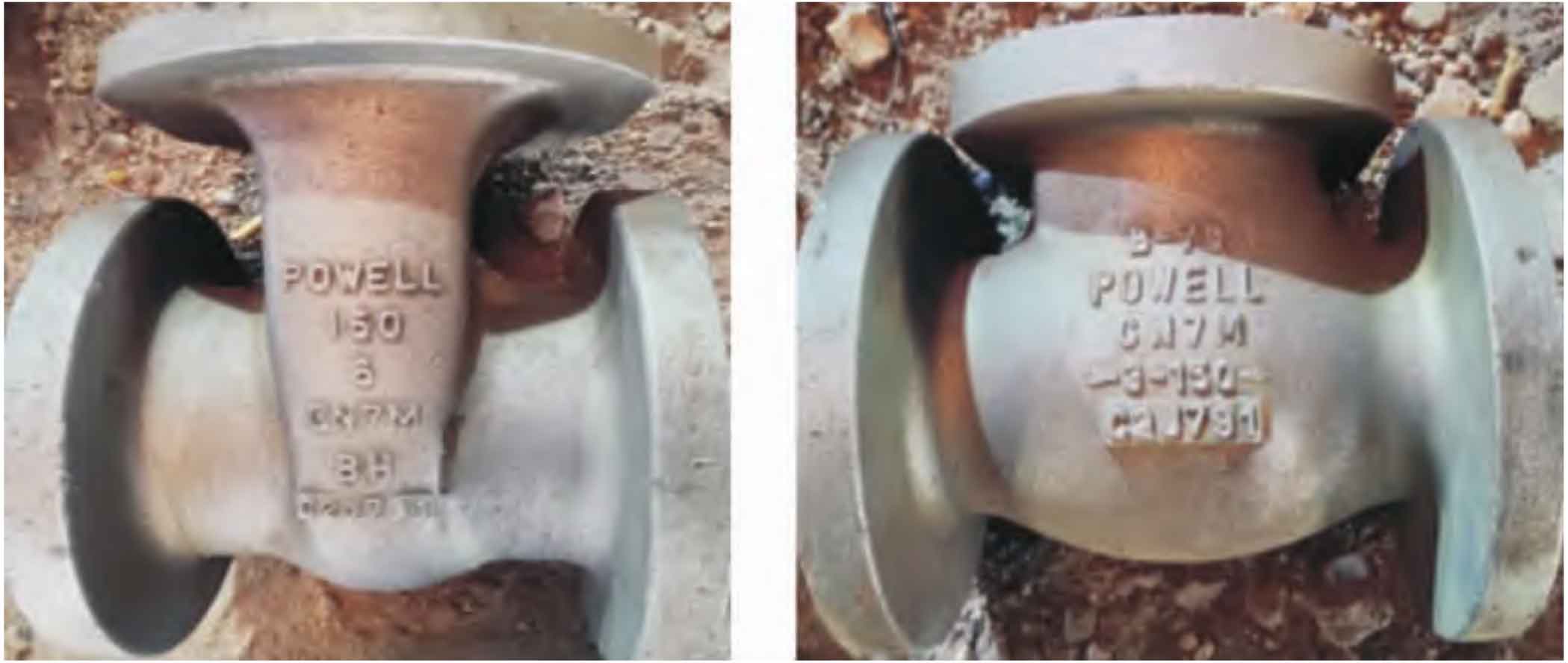| Raw material | 316 stainless steel | Ferrosilicon | Electrolytic manganese | Microcarbon ferrochrome | Nickel plate | Ferromolybdenum | Electrolytic copper | Total |
| Weight/kg | 495 | 10 | 5 | 206 | 232 | 20 | 32 | 1000 |
In view of the above analysis results, our company changed the raw materials used in smelting during production, changed the purchased bar materials into various intermediate alloys for batching, and strictly controlled the content of Sn. See Table 1 for smelting proportioning.
| Number | C | Si | Mn | P | S | Cr | Ni | Mo | Cu | Al | Sn | As | Pb | Sb | Fe |
| 1 | 0.024 2 | 0.86 | 0.88 | 0.016 9 | 0.001 1 | 19.47 | 28.03 | 2.17 | 3.33 | 0.018 1 | 0.057 6 | 0.002 1 | 0.001 8 | <0.002 | Bal. |
| 2 | 0.031 3 | 0.79 | 0.91 | 0.017 7 | 0.001 2 | 19.68 | 28.16 | 2.15 | 3.29 | 0.015 6 | 0.051 3 | 0.001 9 | 0.001 7 | <0.002 | Bal. |
| 3 | 0.028 3 | 0.83 | 0.90 | 0.017 2 | 0.001 1 | 19.71 | 28.22 | 2.15 | 3.27 | 0.016 7 | 0.055 3 | 0.001 9 | 0.001 8 | <0.002 | Bal. |
After using the above smelting raw materials for production, through chemical analysis and detection, as shown in Table 2, the content of Sn element after smelting is about 0.005%, which is reduced to about 1/10 of that before the change, and the crack defect of the product is well solved. In addition to the change of smelting material and proportion, other parts are produced according to the original investment casting process, and there are no cracks in the investment castings, as shown in the figure.

